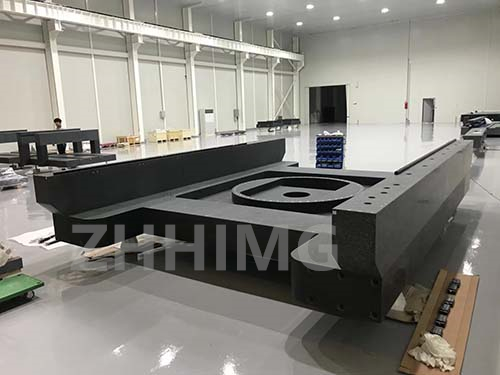Granite is widely used in the semiconductor manufacturing process as a material for precision components due to its excellent mechanical stability, high thermal stability, and low thermal expansion coefficient. However, the assembly of granite components is a complex process that requires a high degree of precision and accuracy. In this article, we will discuss some common defects that may occur during the assembly of granite components in semiconductor manufacturing and how to avoid them.
1. Misalignment
Misalignment is one of the most common defects that can occur during the assembly of granite components. It occurs when two or more components are not aligned properly with respect to each other. Misalignment can cause the components to behave erratically and can lead to performance degradation of the final product.
To avoid misalignment, it is important to ensure that all components are aligned correctly during the assembly process. This can be achieved by using precision alignment tools and techniques. Additionally, it is important to ensure that the components are properly cleaned to remove any debris or contaminants that may interfere with the alignment.
2. Surface Imperfections
Surface imperfections are another common defect that can occur during the assembly of granite components. These imperfections can include scratches, pits, and other surface irregularities that can interfere with the performance of the final product. Surface imperfections can also be caused by improper handling or damage during the manufacturing process.
To avoid surface imperfections, it is important to handle the components carefully and use proper cleaning techniques to remove any debris or contaminants that may scratch or damage the surface. Additionally, it is important to use the proper tools and techniques to machine and polish the surface of the granite components to ensure that they are free from surface imperfections.
3. Thermal Expansion Mismatch
Thermal expansion mismatch is another defect that can occur during the assembly of granite components. This occurs when different components have different thermal expansion coefficients, resulting in stress and deformation when the components are exposed to temperature changes. Thermal expansion mismatch can cause the components to fail prematurely and can lead to performance degradation of the final product.
To avoid thermal expansion mismatch, it is important to select components with similar thermal expansion coefficients. Additionally, it is important to control the temperature during the assembly process to minimize stress and deformation in the components.
4. Cracking
Cracking is a serious defect that can occur during the assembly of granite components. Cracks can occur due to improper handling, damage during the manufacturing process, or stress and deformation caused by thermal expansion mismatch. Cracks can compromise the performance of the final product and can lead to catastrophic failure of the component.
To avoid cracking, it is important to handle the components carefully and avoid any impact or shock that may cause damage. Additionally, it is important to use the proper tools and techniques to machine and polish the surface of the components to avoid stress and deformation.
In conclusion, the successful assembly of granite components for semiconductor manufacturing requires careful attention to detail and a high degree of precision and accuracy. By avoiding common defects such as misalignment, surface imperfections, thermal expansion mismatch, and cracking, companies can ensure that their products meet the highest standards of quality and reliability.
Post time: Dec-06-2023

